The 3 Stages of the Strategic Performance Management Process
by Stacey Barr |To get the most value from the performance management frameworks we use, like OKRs and Balanced Scorecard, it helps to map them to the three stages of strategic performance management.

First and foremost what we are about to explore is not the same as employee performance management, although that process can (and should) be linked to strategic performance management.
What we’re about to explore is defined this way:
Strategic performance management is how an organisation sets its strategic direction, and aligns its business units, projects, budgets and other resources to executing and achieving that strategic direction.
There are a myriad of strategic performance management frameworks used around the world in every sector and industry. Some are generic, like the Logic Model, the Balanced Scorecard, OKRs and PuMP. Others are sector-specific, like many are for different levels of government.
Not a single one of these frameworks is, however, complete enough to guide us directly across every part of the strategic performance management process. They serve different purposes and are designed with different degrees of detail and practicality.
To get the most value from any of these frameworks, it helps to map them to a complete strategic performance management process. This helps us see how to allow them to fulfill their purpose, but also be aware of any remaining gaps that require other appropriate frameworks.
Understanding Strategic Performance Management
Strategic performance management is not a simple linear process: it doesn’t unfold sequentially through the passage of time. That’s because:
- Some of it happens just once every one to five years, and some of it happens as frequently as weekly, monthly or quarterly.
- Some steps are prerequisites for subsequent steps, and other steps can happen in parallel.
- Some steps are led by the senior leadership team, and some steps are led within business units throughout the organisation.
- Some steps can involve anyone, and other steps must involve people with specific skills or roles.
This nonlinearity is why thinking about strategic performance management in stages can be helpful in fitting other performance management frameworks together, to best serve us. And the following three stages are enough to help us understand this:
- The Design Stage: The strategic direction for the organisation is designed, articulated, measured and aligned throughout the organisation so all business units have local goals and KPIs that contribute to the strategic direction. This happens usually no more often than annually.
- The Build Stage: The strategic and business unit KPIs are implemented, dashboards are created and a performance monitoring routine is set up. In parallel, the strategic change initiatives throughout the organisation are planned as projects and budgeted. This happens annually also.
- The Execute Stage: The strategic and business unit KPIs are routinely updated with fresh data, monitored in dashboards and discussed and responded to in routine performance review meetings. This can happen in a weekly, monthly or quarterly rhythm, or a combination of these.
Within each stage of organisational performance management, there are distinct steps that must happen. And it might look like this:
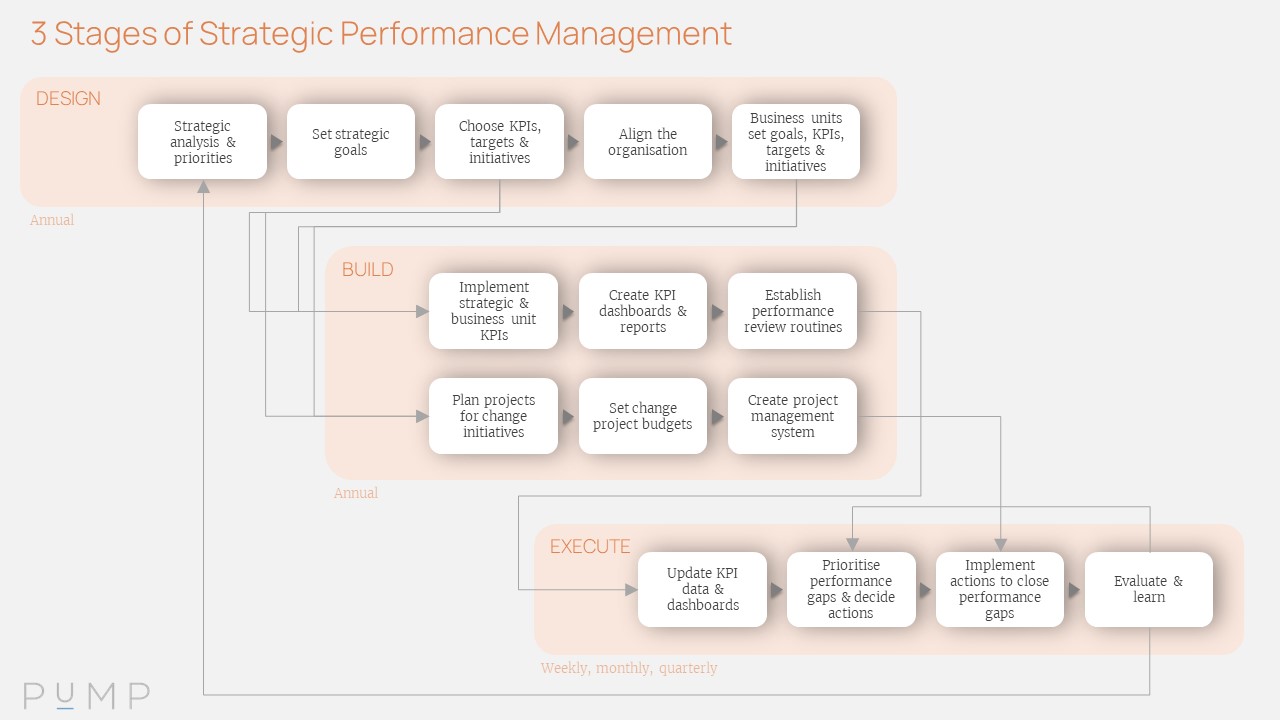
[Click to see a bigger version.]
How Balanced Scorecard aligns with strategic performance management
The Balanced Scorecard may be described sometimes as though it is the strategic performance management process, but it doesn’t directly guide every step, nor does it provide enough detail for some steps. But there can be no strategic performance management process without a strategic direction, and that’s where the Balanced Scorecard (or other strategy design frameworks) are essential.
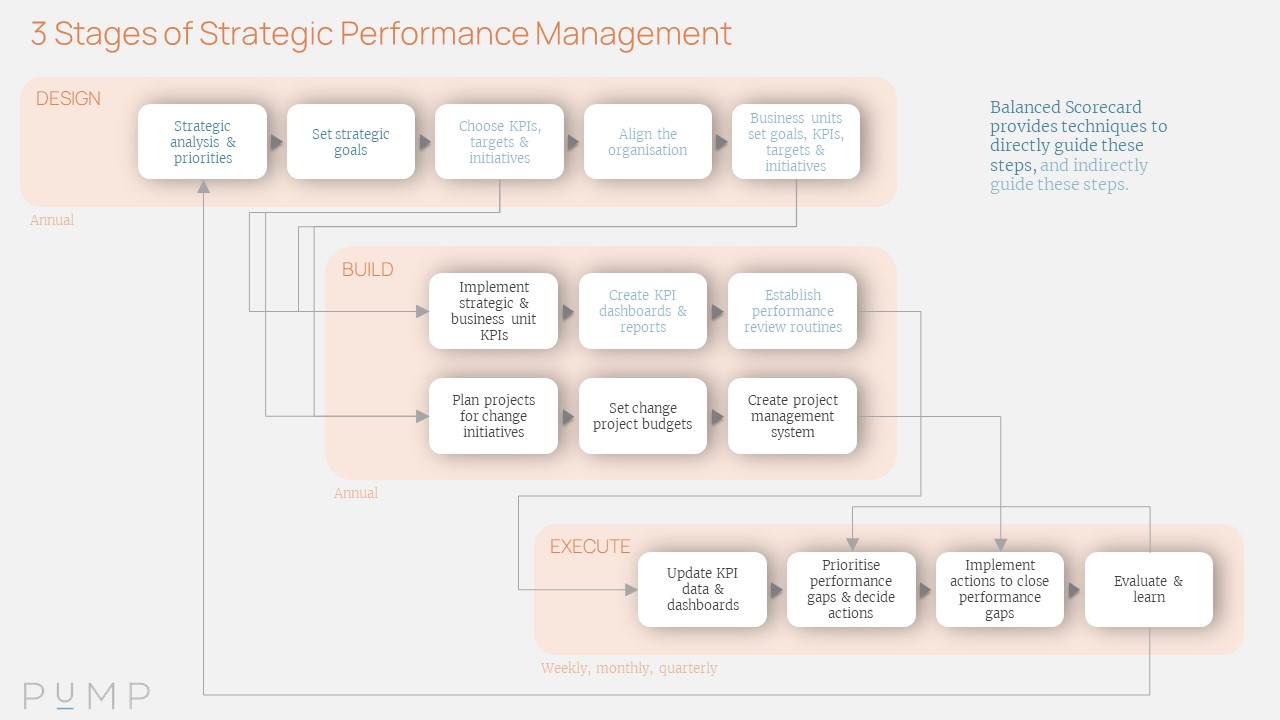
[Click to see a bigger version.]
How OKRs aligns with strategic performance management
The OKR framework is very popular, and it can serve a purpose within a strategic performance management process. Its neat summarisation of objectives and key results has simple appeal, but the risk is that this simplicity can draw attention away from its narrow purpose and lack of how-to detail that a strong strategic performance management process relies on.
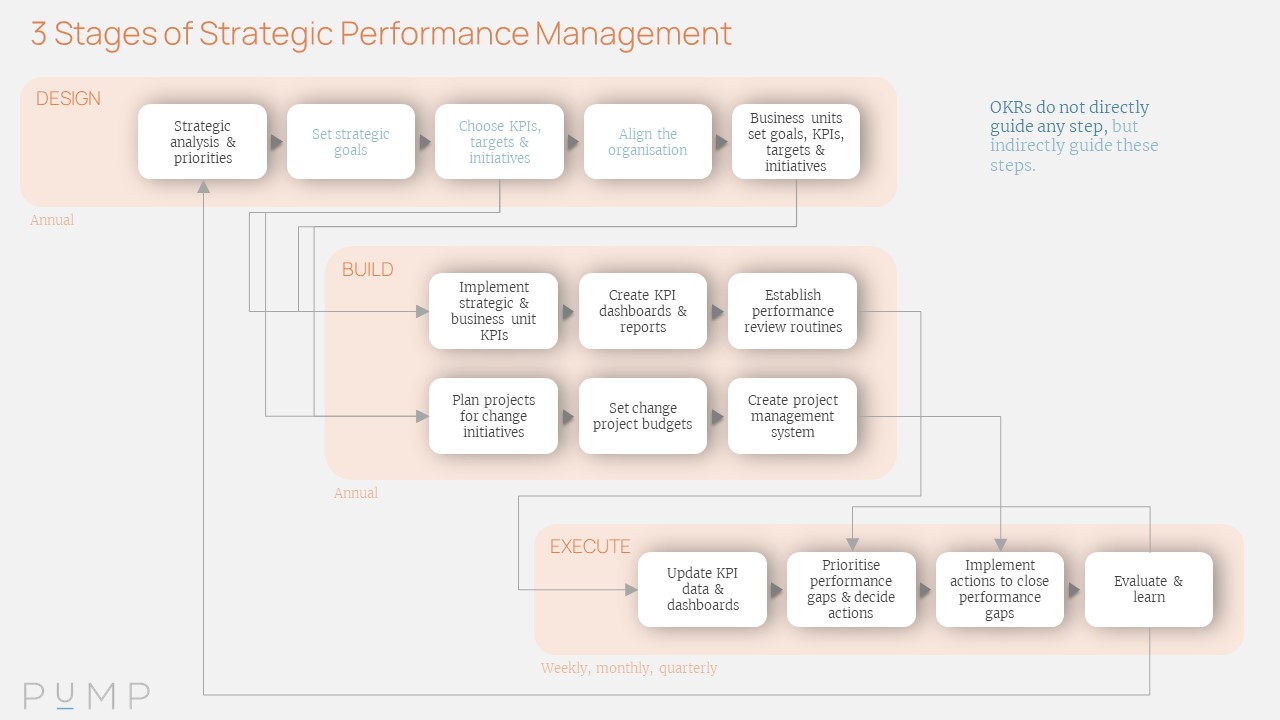
[Click to see a bigger version.]
How PuMP aligns with strategic performance management
PuMP is a deliberate performance measurement process, but it’s steps dovetail into more than just the measurement-related steps of strategic performance management. And it goes without saying, that no strategic performance management process can manage performance without measuring and monitoring it.
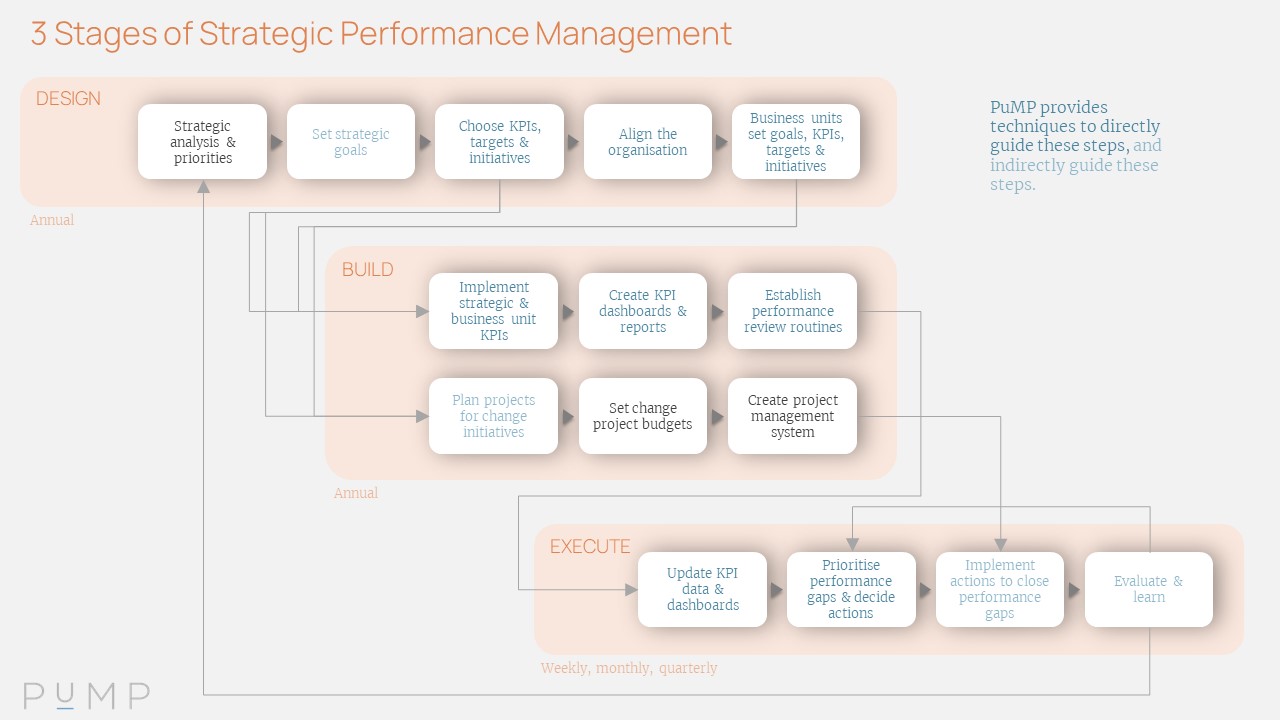
[Click to see a bigger version.]
How project management frameworks align with strategic performance management
There are, of course, different frameworks for project management, like PRINCE2, Agile, or PMBOK. These are vital for any strategic performance management system to work, because they are the key to making the best alignment and use of resources and time to execute strategy.
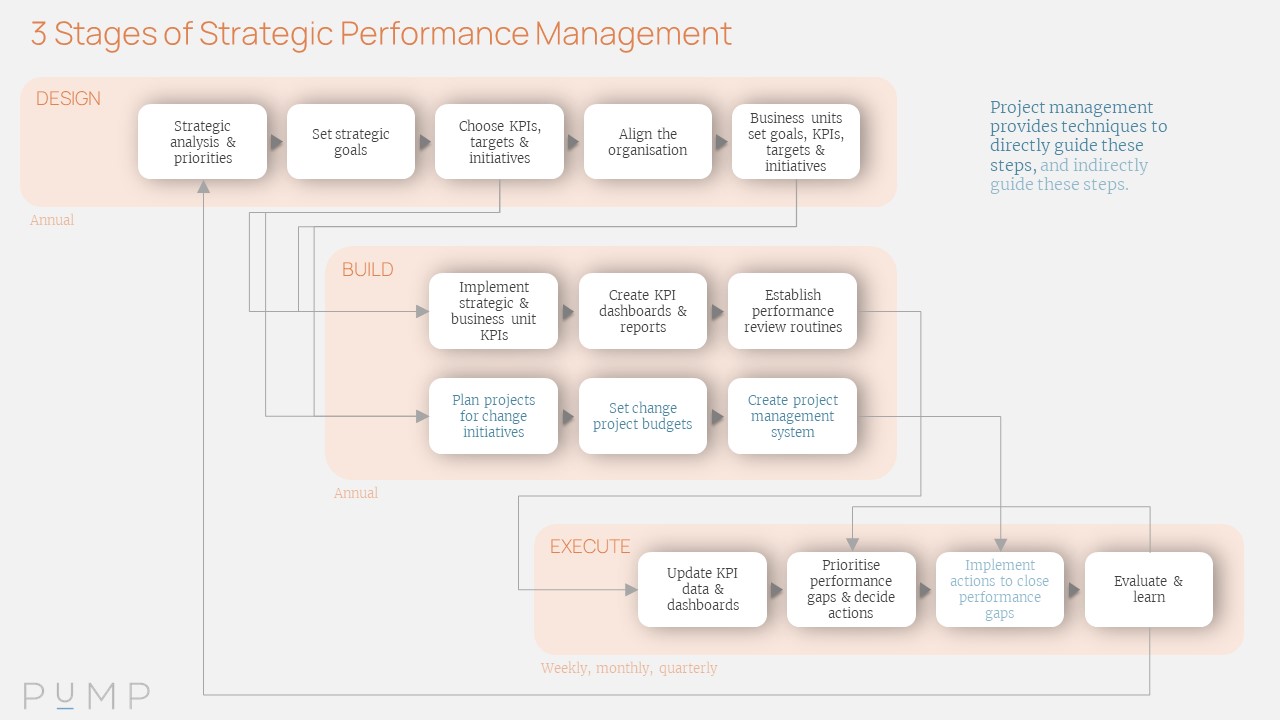
[Click to see a bigger version.]
How performance improvement frameworks align with strategic performance management
There are, also, different frameworks for performance improvement, like Lean, Six Sigma, Kaizen, or Theory of Constraints. No strategic performance management system is complete without one, because a random approach to improve performance rarely improves performance.
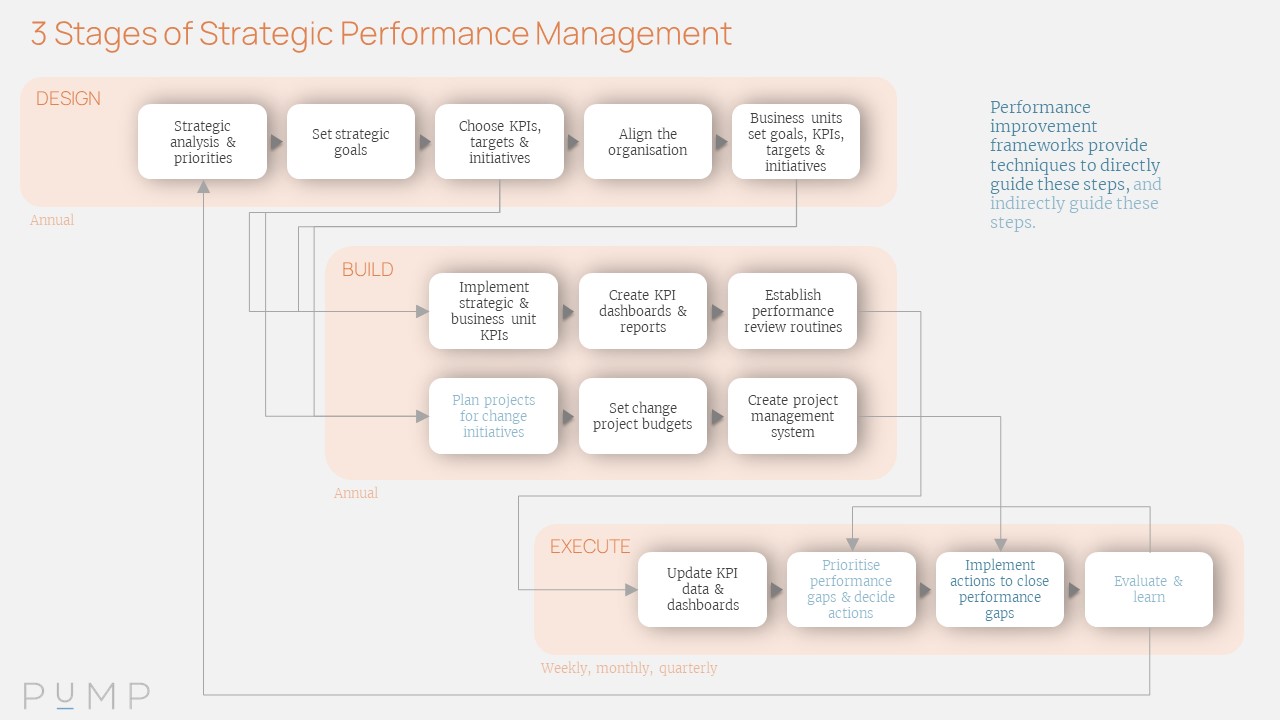
[Click to see a bigger version.]
How change management frameworks align with strategic performance management
There are, also, different frameworks for performance improvement, like Prosci and ADKAR, Kotter’s Theory for Change, or Lewin’s Model of Change. Strategic performance management requires change, and change is something that we naturally struggle with or resist. It won’t happen smoothly without deliberate attention.
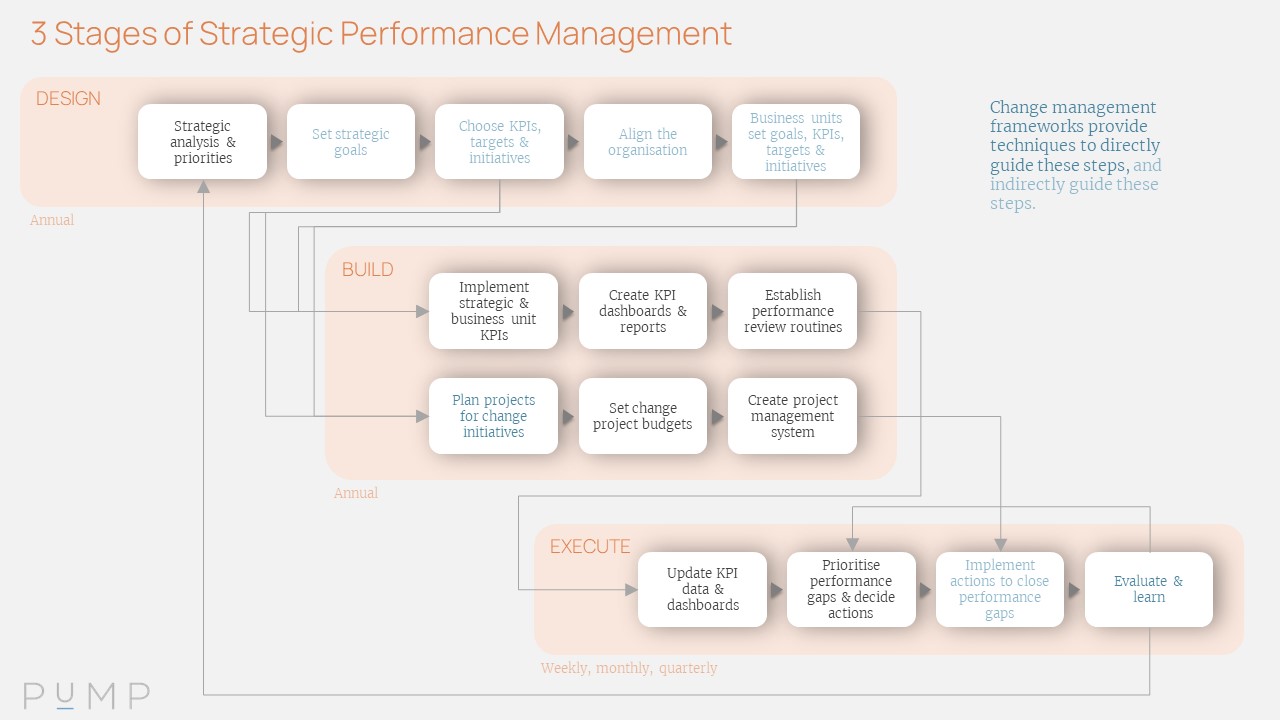
[Click to see a bigger version.]
How do your organisation’s frameworks align with strategic performance management?
If it helps, please download this template of the strategic performance management process and use it to stocktake how well the frameworks used in your organisation fit. Are there any gaps? Are any steps only indirectly supported? What other frameworks could help your approach to strategic performance management?
Connect with Stacey
Haven’t found what you’re looking for? Want more information? Fill out the form below and I’ll get in touch with you as soon as possible.
167 Eagle Street,
Brisbane Qld 4000,
Australia
ACN: 129953635
Director: Stacey Barr




